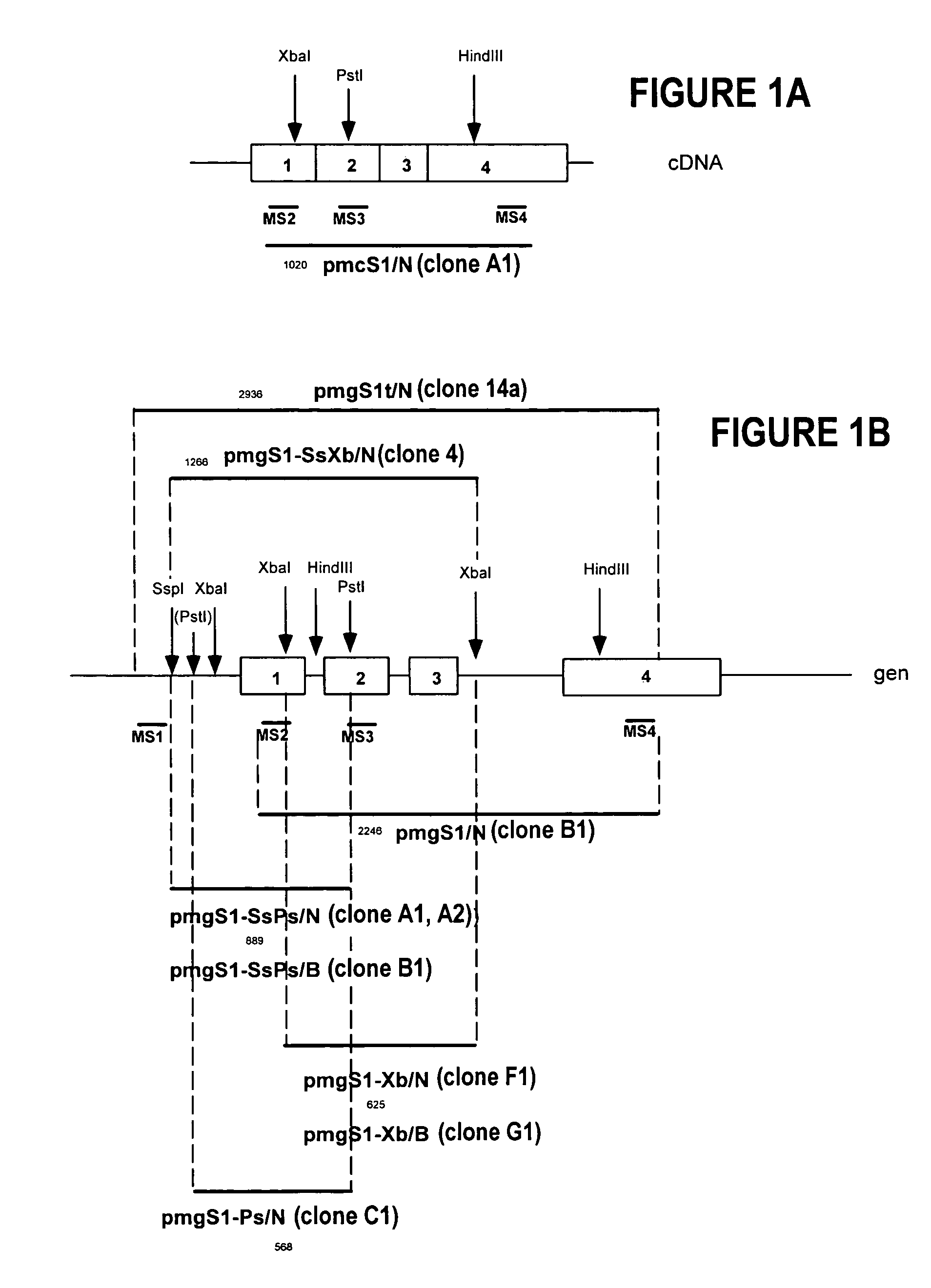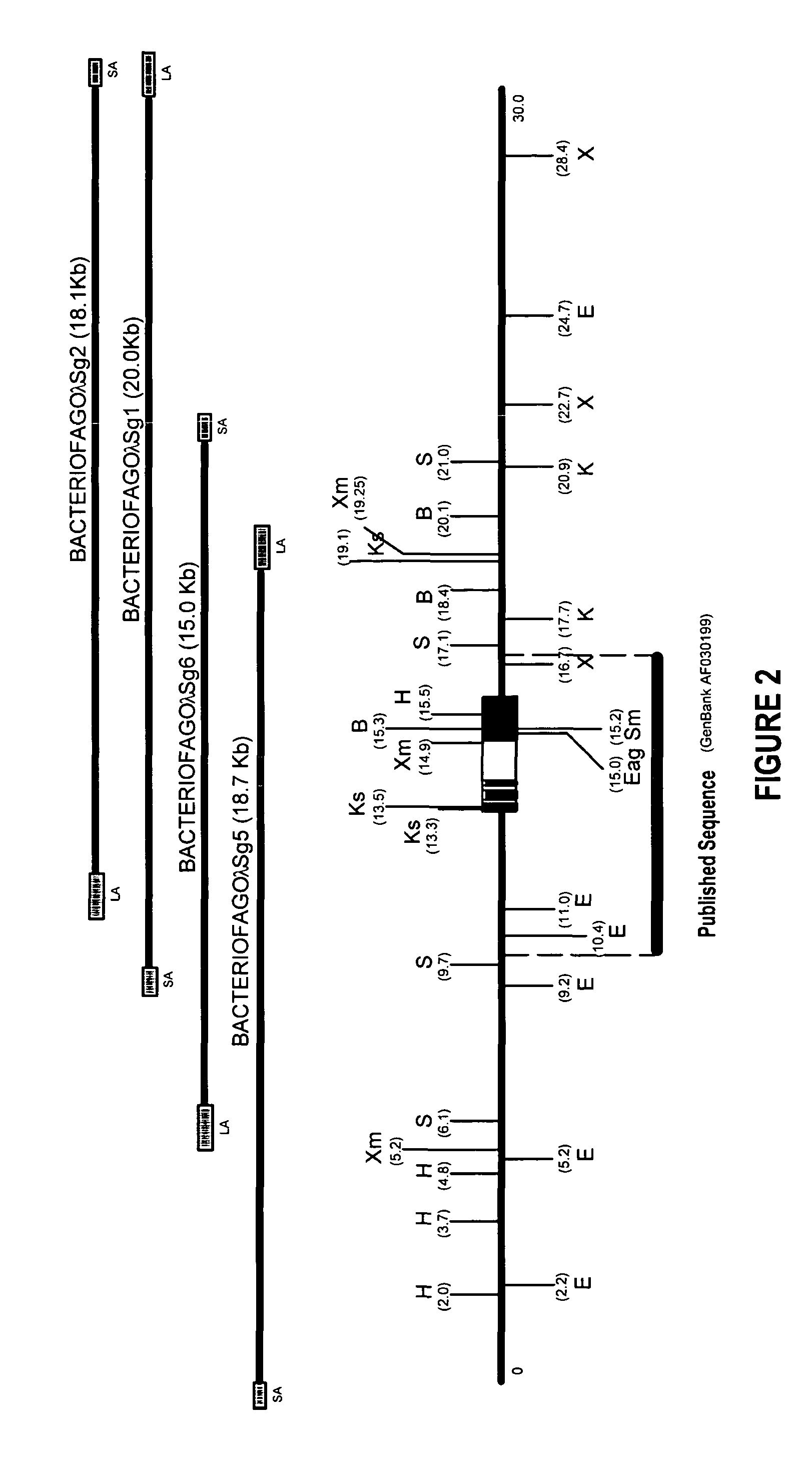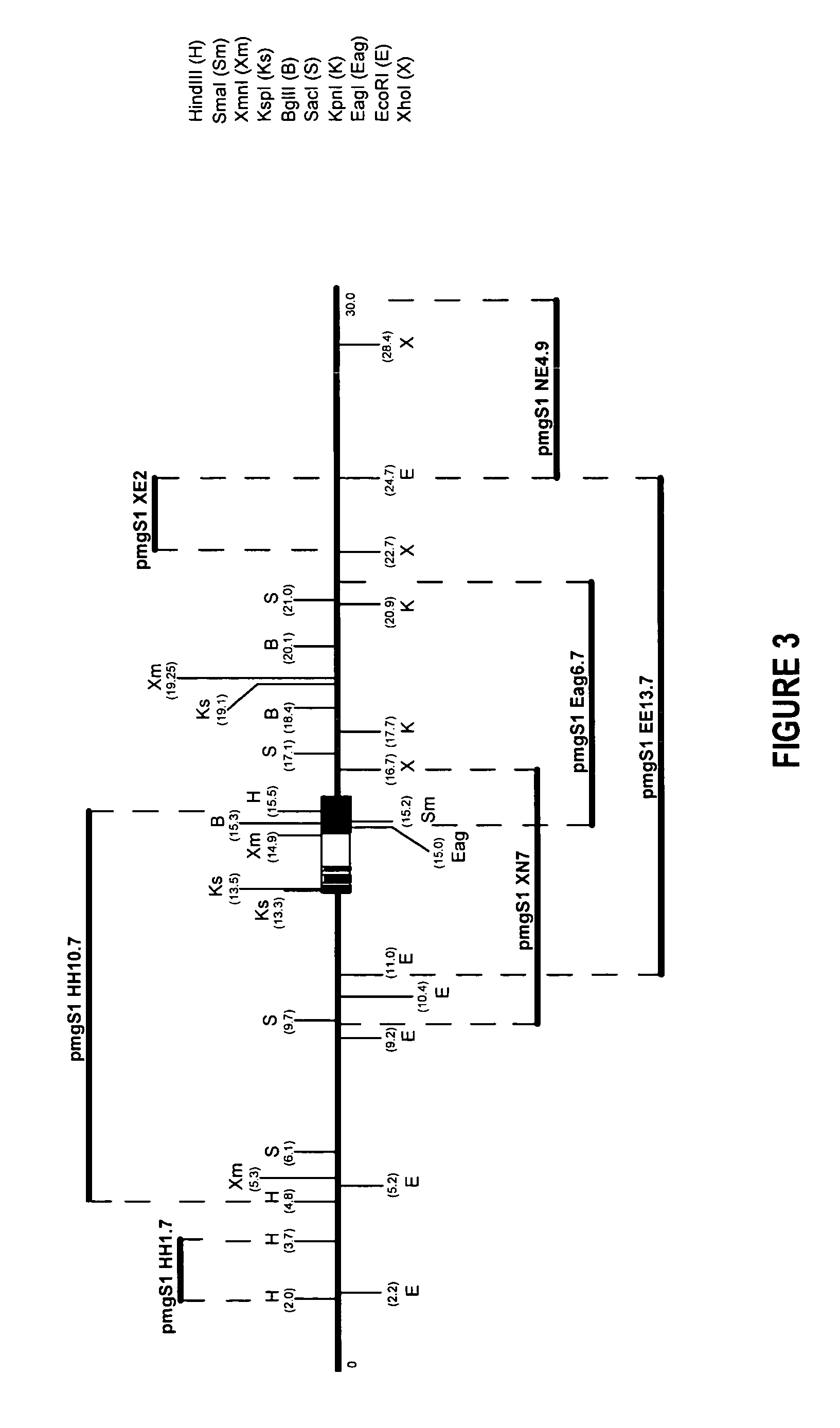Non-human mutant mammals deficient in Sigma receptors and their applications
a technology of sigma receptor and mutant mammals, which is applied in the field of non-human mutant mammals deficient in endogenous sigma receptors, can solve the problems of unknown and enigmatic actual role of sigma-1 receptor, and achieve the effects of reducing or alleviating motor side effects, preventing, reducing or alleviating side effects, and efficiently transmitting
- Summary
- Abstract
- Description
- Claims
- Application Information
AI Technical Summary
Benefits of technology
Problems solved by technology
Method used
Image
Examples
example 1
Isolation and Cloning of the Mouse Sigma-1 Receptor Gene and Construction of a Homologous Recombination Vector with Positive-Negative Selection
[0102]1.1 Isolation of the Mouse Siqma-1 Receptor Gene
[0103]Using the published sequences for the mouse Sigma-1 receptor CDNA and gene (Prasad), four oligonucleotides were designed in order to isolate and clone said gene. The characteristics of these oligonucleotides, known as MS1, MS2, MS3 and MS4, are given in detail in Table I. The relative positions of these oligonucleotides with respect to the published mouse cDNA and gene sequences are schematically represented in FIG. 1.
[0104]
TABLE IOligonucleotides used to clone the mouse Sigma-1 receptor genePositionPositionrelative torelative toDNA sequencethe genethe cDNAOligonucleotide(5′->3′)[AF030199][AF030198]MS1SEQ. ID. NO: 12567-2584—MS2SEQ. ID. NO: 23437-3458113-134MS3SEQ. ID. NO: 33726-3708277-259MS4SEQ. ID. NO: 45683-56641132-1113
[0105]These oligonucleotides were used to obtain specific DN...
example 2
Generation of Mutant Mice Deficient in the Endogenous Sigma-1 Receptor Gene
[0119]2.1 Inactivation of the Sigma-1 Receptor Gene by Homologous Recombination in Mouse ES Cells and Production of Chimerical Mice with said Mutation
[0120]After constructing the pHR53TK vector, it was linearised by digestion with the Sal I restriction enzyme (FIG. 7). Then 20 μg of the pHR53TK linearised vector were used to transfect 9.6×106 ES R1 cells (Nagy) by electroporation (electroporation conditions: 500 μF, 250 V). After 24 hours the positive selection process was initiated by adding 300 μg / ml of the G418 antibiotic. After 48 hours the drug ganciclovir was added for the negative selection process, until reaching a final concentration of 2 μM. Eight days later it was possible to identify independent recombinant clones (resistant to G418 and ganciclovir) which were sub-cultured separately. The entire process was performed in the presence of G418-resistant mouse embryonic fibroblasts (MEFs) and of L.I.F...
PUM
| Property | Measurement | Unit |
|---|---|---|
| molecular mass | aaaaa | aaaaa |
| molecular mass | aaaaa | aaaaa |
| affinity | aaaaa | aaaaa |
Abstract
Description
Claims
Application Information
 Login to View More
Login to View More - R&D
- Intellectual Property
- Life Sciences
- Materials
- Tech Scout
- Unparalleled Data Quality
- Higher Quality Content
- 60% Fewer Hallucinations
Browse by: Latest US Patents, China's latest patents, Technical Efficacy Thesaurus, Application Domain, Technology Topic, Popular Technical Reports.
© 2025 PatSnap. All rights reserved.Legal|Privacy policy|Modern Slavery Act Transparency Statement|Sitemap|About US| Contact US: help@patsnap.com



